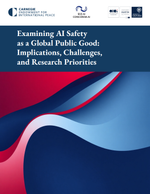Warburton PA, Saleem S, Fenton JC, Korsah M, Grovenor CR
Physical review letters Y. 2009, vol. 103, No. 21, [217002.1-217002.4] ISSN : 0031-9007
View Journal Article / Working PaperIn the high-temperature superconductor Tl2Ba2CaCu2O8 the c-axis coherence length (~ 2?) is less than the separation of adajacent cuprate double-planes (~ 15 ?). Hence adjacent cuprate double-planes are intrinsically Josephson-coupled. When the bias current flows perpendicular to the planes, the resulting d.c. current-voltage characteristics resemble those of an array of underdamped Josephson junctions. I will discuss our experiments on sub-micron-scale intrinsic Josephson junctions using Tl2Ba2CaCu2O8 thin films. In addition to observing several well-known Josephson phenomena we have observed a number of effects related to the fact that the dynamics of the intrinsic junctions at the plasma frequency are moderately damped (Q ~ 8) – i.e. falling between the well-understood underdamped and overdamped regimes. This results in a number of counter-intuitive experimental observations including a suppression of thermal fluctuations as the temperature is increased and a shift of the skewness of the switching current distributions from negative at low temperatures to positive at high temperatures. Simulations of the dynamics confirm that these phenomena result from repeated (~103) phase slips as the junction undergoes a transition from the zero-voltage state to the running state. We further show by both experiment [1] and simulation [2] that increased dissipation counter-intuitively increases the supercurrent in the moderate damping regime. This leads to the anomalous switching order often observed in arrays of intrinsic junctions.




